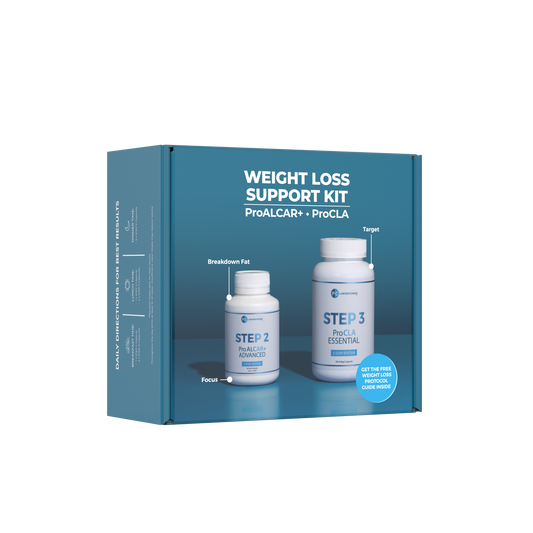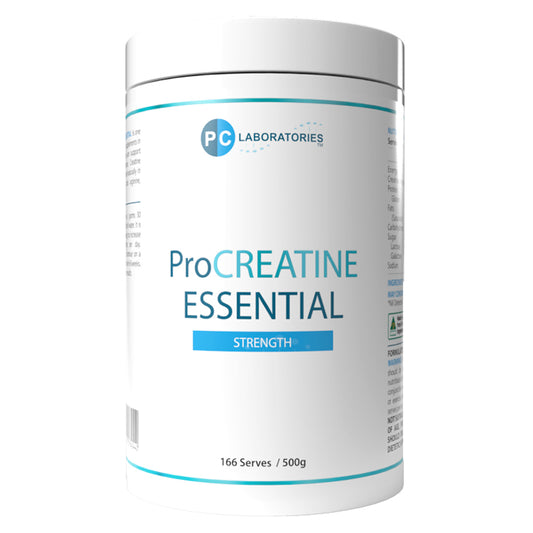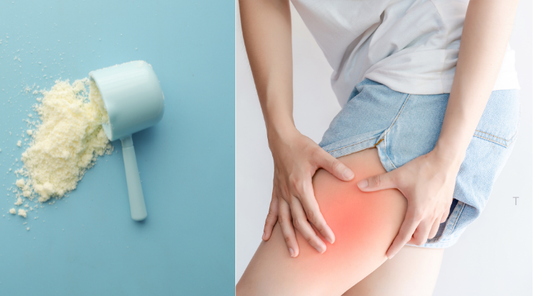If you’ve ever stood up after a long day at your desk and felt like your joints turned to stone, you’re not the only one. Stiffness, achy hips, and a back that constantly reminds you it’s there- these are the calling cards of poor mobility. Whether you’re an active gym-goer or just trying to make it through the day without nagging pain, adding mobility exercises to your daily routine can make a huge difference.
Mobility is more than just flexibility. It’s the combination of strength, control, and range of motion in your joints. And when mobility is compromised, posture suffers, and pain creeps in. The good news? A few simple movements can help restore how your body moves and feels. With consistency, your ease of movement can increase, no matter your age.
Why Mobility Declines (and Why It Matters)
Mobility can take a nosedive for several reasons. Here’s a breakdown of the most common culprits:
1. Ageing
As we age, our joints lose hydration, cartilage thins, and connective tissues become less elastic. A study published in The Journals of Gerontology (2013) found that joint range of motion decreases significantly after age 30, especially in the spine, hips, and shoulders. Reduced mobility can lead to compensatory movement patterns, eventually causing chronic pain or injury. We may sit down more or lean heavily into one side of our body, which worsens the issue.
2. Nutrient Deficiencies
Nutrition plays a major role in how well our joints move and recover. Low levels of magnesium, vitamin D, and omega-3 fatty acids are linked to increased inflammation and poor joint health. According to research in Nutrients (2019), these deficiencies can lead to increased joint stiffness and slower recovery from musculoskeletal strain. Test your Vitamin D levels before supplementing, and take your magnesium and fish oil before bed. If you need joint and tendon support from collagen peptides, ProBURN Protein is the best.
3. Lack of Movement
Modern lifestyles encourage hours of sitting, which shortens hip flexors, weakens glutes, and causes thoracic stiffness. When certain muscles are locked tight or underused, others overcompensate, leading to poor posture and discomfort. Modern-day life has created a sedentary culture, with more driving and less walking.
4. Repetitive Movements
Doing the same motion over and over (think: typing, cycling, or lifting) can cause overuse injuries and muscular imbalances. Over time, this can reduce joint mobility and lead to chronic pain conditions like tendinitis or impingement. This can often require an expert’s opinion, like a physio or osteopath.
Mobility For Posture and Pain
Mobility supports proper posture by allowing your joints to align and move efficiently. Without it, your body compensates in all the wrong ways. Tight hips can cause your lower back to arch excessively. A stiff upper spine can pull your head forward, straining your neck. These compensations not only throw off your posture but often become sources of chronic pain.
Limited mobility can also affect your movement mechanics, making even simple tasks like reaching, bending, or walking feel strained. That’s where targeted mobility exercises come in.
5 Mobility Exercises to Improve Pain and Posture
These movements are designed to open tight areas, promote better posture, and support healthy joint mechanics. They’re simple but powerful when done consistently. These are basic movements that can be modified with blocks or bands if necessary.
1. Child’s Pose with Reach (Left and Right)
Targets: Lower back, lats, shoulders, and obliques
How to Do It:
Start on your knees, sitting back onto your heels.
Extend your arms forward, forehead to the mat in a classic Child’s Pose.
Walk both hands to the right, feeling a stretch through your left side.
Hold for 30 seconds, then walk both hands to the left and repeat.
Breathe deeply into your side body.
Why It Works: This stretch gently lengthens the spine and opens the lateral muscles (especially the lats), which often restrict shoulder and thoracic mobility. Lateral movement is often neglected but is essential for balanced posture.
2. Deep Lunge with Thoracic Twist
Targets: Hip flexors, quads, thoracic spine
How to Do It:
Step your right foot forward into a deep lunge, keeping the back leg straight.
Place your left hand on the ground and twist your torso to the right, reaching your right arm up to the ceiling.
Hold for a few seconds, then twist to the left, threading your right arm under your left.
Perform 5–6 reps per side.
Why It Works: This dynamic stretch opens tight hip flexors while unlocking the thoracic spine, helping reduce low back tension and improve rotational mobility.
3. Squat with Hip Mobility Movement
Targets: Ankles, hips, lower back
How to Do It:
Stand with feet shoulder-width apart and squat as low as comfortably.
Place your elbows inside your knees and gently press them outward.
Press outward, then relax to open each hip.
Hold the bottom position for 30–60 seconds.
Why It Works: The deep squat is a primal movement that promotes hip, knee, and ankle mobility. Moving gently in the bottom position helps restore the natural range of motion and improves hip joint function.
4. Downward Dog
Targets: Hamstrings, calves, shoulders, and spine
How to Do It:
Begin in a high plank position.
Lift your hips up and back, creating an inverted V shape.
Keep your spine long, pressing your chest toward your thighs.
Bend one knee at a time to “walk the dog” and deepen the stretch.
Hold for 30 seconds to 1 minute.
Why It Works: This yoga staple decompresses the spine, opens the posterior chain (hamstrings, calves), and improves shoulder positioning—all essential for better posture.
5. Couch Stretch
Targets: Hip flexors, quads
How to Do It:
Place one foot against a wall or couch with your knee bent and shin vertical.
Bring the other leg forward into a lunge position.
Keep your torso upright and squeeze your glutes.
Hold for 30–60 seconds, then switch legs.
Why It Works: This intense hip flexor stretch counteracts hours of sitting. Releasing these muscles helps restore pelvic alignment and reduce low back pain.
Nerd Out On Mobility Training
Mobility work improves the elasticity and hydration of tissues. Research in The Journal of Strength and Conditioning Research (2014) shows that mobility drills improve joint range of motion more effectively when paired with dynamic movement rather than static stretching alone.
Studies have also shown that mobility exercises can decrease inflammation. A review published in Frontiers in Physiology (2017) found that regular movement improves the flow of synovial fluid, which nourishes cartilage and reduces joint stiffness. It also helps flush inflammatory byproducts that can accumulate in static tissues.
Mobility training stimulates proprioceptors—nerve endings that help the body sense its position in space. This enhances balance, coordination, and injury prevention, especially as we age. This is the reason why we need to focus on movement before pain medications and fancy treatments.
Movement As Medicine
- Mobility work is particularly beneficial for individuals with:
- Lower back pain – Poor hip and thoracic mobility are often culprits.
- Neck and shoulder tension – Releasing tight chest and upper back muscles improves shoulder mechanics.
- Osteoarthritis – Gentle mobility keeps joints lubricated and functional.
- Sciatica – Loosening the hips and spine can reduce nerve compression.
- Plantar fasciitis – Improving ankle mobility and calf flexibility reduces strain on the foot.
It’s also critical for athletes, office workers, new moms, and anyone experiencing stiffness or posture-related discomfort.
Prevention Better Than A Cure
Staying pain-free isn’t about avoiding movement- it’s about the right kind of movement. The concept of “movement as medicine” is more than just a catchy phrase; it’s backed by science. A study in Pain Medicine (2016) found that low-impact movement, like mobility and stretching routines, significantly reduced chronic pain and improved functional ability. The mechanism? Improved blood flow, reduced inflammation, and endorphin release.
Another study in The Lancet (2018) emphasised that movement-based interventions outperform bed rest or painkillers in managing musculoskeletal pain. By regularly moving our joints through their full range, we not only reduce stiffness but also train our nervous system to stop perceiving non-threatening movement as painful.
Move More, Hurt Less
Mobility work isn’t a bogus fitness trend—it’s a foundational piece of feeling and functioning better. Whether you’re aiming to improve posture or ease nagging joint pain a few minutes of intentional mobility each day can shift the way your body feels dramatically.
Staying consistent is key. Mobility doesn’t offer instant gratification like a coffee or a massage, but its benefits are deep, lasting, and scientifically backed. It enables your body to move the way it was designed to, and perform at it’s best. Keep moving, and your body will thank you for decades to come.
References
Booth, F. W., Roberts, C. K., & Laye, M. J. (2012). Lack of exercise is a major cause of chronic diseases. Comprehensive Physiology, 2(2), 1143–1211. https://doi.org/10.1002/cphy.c110025
Groot, L. C. P. G. M. D., van Staveren, W. A., & Dirren, H. (2013). Nutritional status and functional capacity in elderly people. The Journals of Gerontology: Series A, 48(Special Issue), 113–121. https://doi.org/10.1093/gerona/48.Special_Issue.113
Kirkesola, G. (2014). The role of mobility training in injury prevention and performance enhancement. Journal of Strength and Conditioning Research, 28(Supplement 1), S19–S24. https://doi.org/10.1519/JSC.0000000000000457
Pedersen, B. K., & Saltin, B. (2015). Exercise as medicine—Evidence for prescribing exercise as therapy in 26 different chronic diseases. Scandinavian Journal of Medicine & Science in Sports, 25(S3), 1–72. https://doi.org/10.1111/sms.12581
Rice, D., Nijs, J., Kosek, E., Wideman, T., Hasenbring, M., Koltyn, K., ... & Meeus, M. (2016). Exercise-induced hypoalgesia in pain-free and chronic pain populations: State of the art and future directions. Pain, 157(7), 1389–1399. https://doi.org/10.1097/j.pain.0000000000000575
Rogers, M. A., & Evans, W. J. (1993). Changes in skeletal muscle with aging: Effects of exercise training. Exercise and Sport Sciences Reviews, 21, 65–102. https://doi.org/10.1249/00003677-199300210-00005
Schuch, F. B., Vancampfort, D., Firth, J., Rosenbaum, S., Ward, P. B., Silva, E. S., ... & Stubbs, B. (2017). Physical activity and incident depression: A meta-analysis of prospective cohort studies. American Journal of Psychiatry, 175(7), 631–648. https://doi.org/10.1176/appi.ajp.2018.17111194
van der Zwaard, B. C., Beijsterveldt, A. M. M., van der Esch, M., & Dekker, J. (2017). Joint range of motion and its relationship with age in community-dwelling older adults: A systematic review and meta-analysis. Archives of Gerontology and Geriatrics, 69, 127–137. https://doi.org/10.1016/j.archger.2016.11.004








